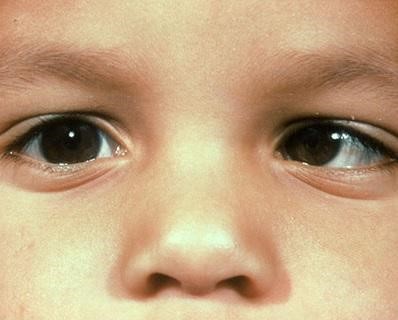Health and Fitness
What is Strabismus (Squint)?

When the eyes are not pointed in the same direction, it is referred to as squint or strabismus. In other words, a person’s staring eye may not focus on the thing. When the patient is gazing straight ahead, the second eye may turn inward, outward, upward, or downward.
What causes squinted eyes, and why?
- The six muscles that surround your eye work together to control how it moves. To align and focus both of your eyes on a single target, all of the muscles in both eyes must work together. These muscles are known as extraocular muscles. A person with normal vision will focus on the same thing with both eyes. The brain can then integrate the two images it receives from the two eyes into a single 3-D image. The feeling of depth is provided by this three-dimensional image.
- In strabismus, when one eye moves out of alignment, two distinct images are sent to the brain. A child who has crossed eyes “learns” to ignore the image coming from the misaligned eye. The child’s sense of depth is diminished as a result. Adults who squint have already trained their brains to receive two images, so they cannot ignore the image coming from the misaligned eye. As a result, the adult experiences double vision.
- When an issue interferes with the control and functionality of the extraocular muscles, strabismus develops. The extraocular muscles, the nerves, or the parts of the brain that govern them may all be to blame for this issue.
- Squinting can be a symptom of brain disorders such as Cerebral Palsy, Down syndrome, hydrocephalus, and brain tumors.
- One of the main reasons of squint eyes is a cataract, although other common causes include diabetes, an eye injury, an eye tumor, or cataract surgery.
- A hemangioma, which is an abnormal accumulation of blood vessels around the eye, may have developed during infancy or may have caused damage to the retina in premature babies.
- Genes may also play a role in how much you squint.
- A condition known as accommodative esotropia can occasionally arise when a kid with untreated farsightedness tries to focus. This occurs due to excessive focusing effort
Surgery and treatments for squinting
Treatment for a squint generally involves:
- If your child has long-sightedness or another vision issue that is causing them to squint, glasses may be able to help.
- Exercises for the muscles that control eye movement, such as eye exercises, can sometimes improve how well the eyes cooperate.
- During surgery, the muscles that control eye movement are manipulated to properly align the eyes. It might be advisable if glasses are ineffective.
- Injections into the ocular muscles weaken them, aiding in better eye alignment. But often, the effect only lasts a few months.
- You might need to start by treating your child’s lazy eye if it results from their squint.
- To help the affected eye’s vision, lazy eye treatment usually includes covering the undamaged eye with a patch.
At Bharati Eye Foundation, our best eye specialist (in Patel Nagar) provides the best treatment for squints.
Read Also:




